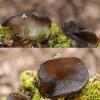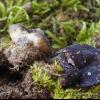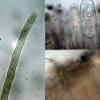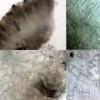
21-03-2017 18:46
Lepista ZacariasHi everyone,This fungus was found on pine needles

20-03-2017 18:51
Ethan CrensonCan anyone help me with this? In Central Park NYC,

19-03-2017 23:11
Salvador TelloHola a todos.En este caso pienso que es Octospora

19-03-2017 23:10
Salvador TelloHola a todos.En este caso pienso que es Octospora
Discina ??
Castillo Joseba,
22-03-2017 10:17
A ver si teneis alguna sugerencia
Saludos
Joseba
Enrique Rubio,
22-03-2017 10:35
Re : Discina ??
melaleuca, no melanoleuca.
Castillo Joseba,
22-03-2017 10:37
Re : Discina ??
Vaya ... se me ha cruzado... crees que es ella
Joseba
Joseba
Enrique Rubio,
22-03-2017 10:59
Re : Discina ??
Sí. Lo creo, pero tus ejemplares están aún muy inmaduros. Pero hace tiempo que es una Gyromitra. Aquí la tienes http://www.ascofrance.com/search_recolte/4426




